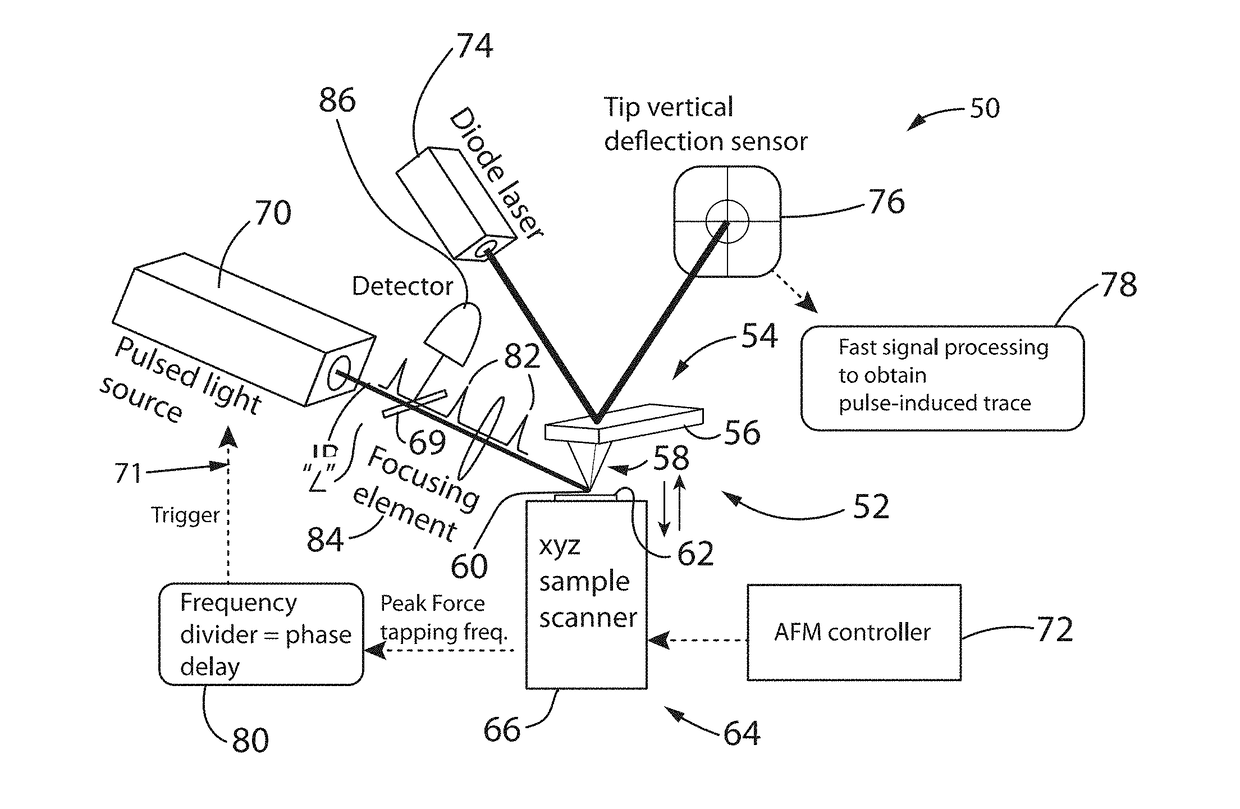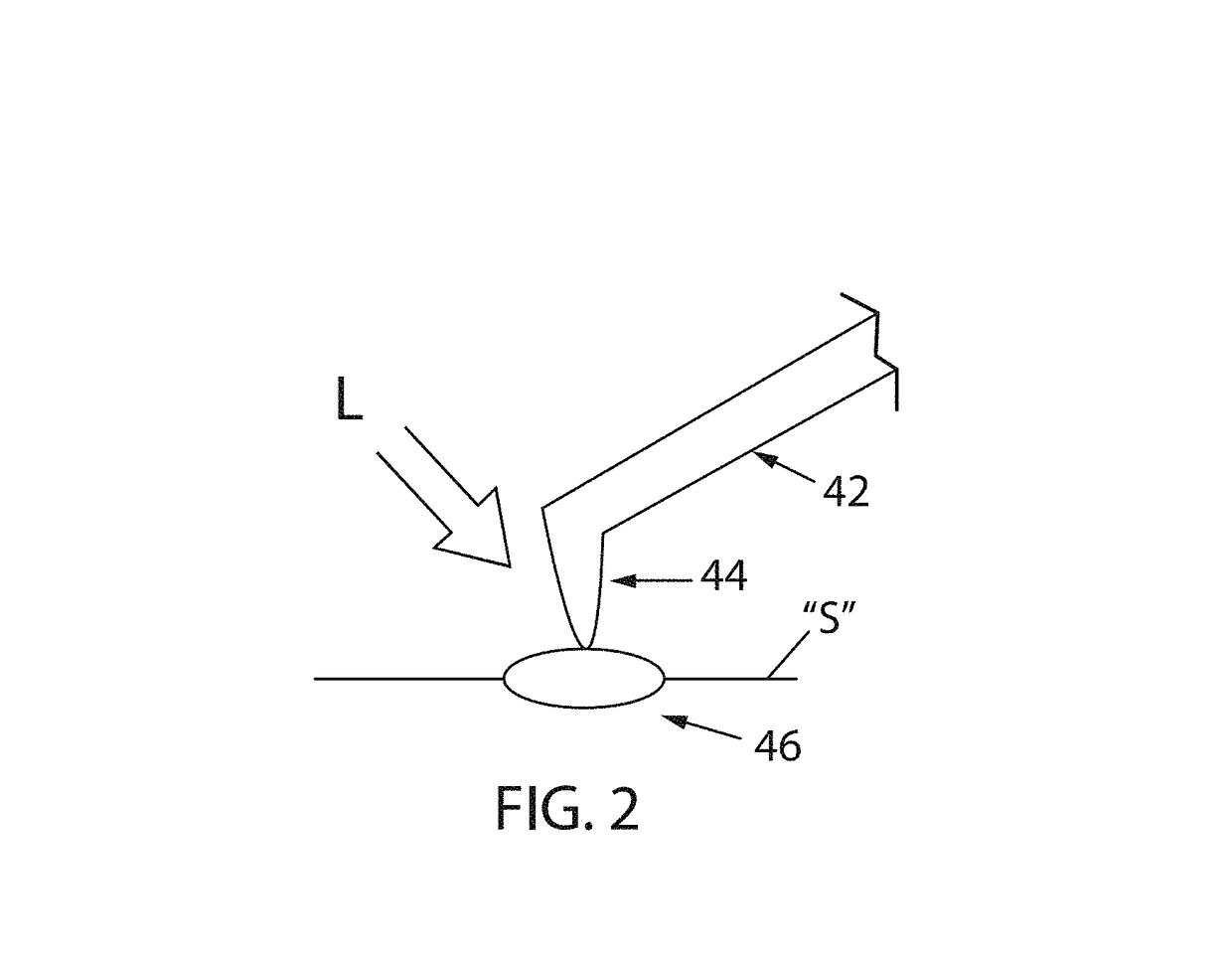However, despite ongoing progress in the development of imaging techniques with spatial resolution beyond the
diffraction limit, simultaneous spectroscopic implementations delivering chemical specificity and sensitivity on the
molecular level have remained challenging.
Far-field localization techniques can achieve spatial resolution down to about 20 nm by point-spread function reconstruction but typically rely on
fluorescence from discrete molecular or
quantum dot emitters, with limited chemically specific information.
Far-field localization techniques can achieve spatial resolution down to about 20 nm by point-spread function reconstruction but typically rely on
fluorescence from discrete molecular or
quantum dot emitters, with limited chemically specific information.
In the standard implementation, however, the
direct illumination of the tip apex results in a three-to-four orders of magnitude loss in excitation efficiency, related to the mode mismatch between the
diffraction-limited far-field excitation focus and the desired tens of nanometers near-field localization, as determined by the tip apex
radius.
The resulting loss of sensitivity, together with a large far-field background
signal, often limit contrast and may cause imaging artifacts, presenting challenges for the general implementation of a wider range of spectroscopic techniques in s-SNOM.
However, aperture-limited and
wavelength-dependent
fiber throughput reduces sensitivity, generally making NSOM unsuitable for spectroscopic techniques that have low intrinsic
signal levels.
In the end, NSOM provides a challenging solution because the
signal size is small and the
acquisition scheme is quite complex employing interferometric detection, stable
laser sources and efficient background signal suppression.
Consequently, it has difficulty in acquiring absorption spectra.
In sum, despite ongoing progress in the development of imaging techniques with spatial resolution beyond the
diffraction limit, spectroscopic implementations delivering chemical specificity and sensitivity on the
molecular level have remained challenging.
At a
wavelength absorbed by the sample, the absorption will typically cause a local increase in temperature and a rapid
thermal expansion of the sample.
Free
Electron Lasers are large expensive apparatus.
This has the effect of a quick shock to the
cantilever arm, which, if the ability of the
cantilever to respond to this shock is slower than the shock, will result in exciting a resonant oscillation in the
cantilever.
As further noted in the '819 patent, the apparatus described in the literature suffers from limitations.
In addition to being costly and easy to damage, this arrangement requires special
sample preparation techniques to prepare a sample thin enough such that the IR light can penetrate the sample to reach the probe.
Further, the actual signals generated can be small, thus requiring averaging of the signal and limiting the bandwidth of the technique.
However, signal levels are still small and challenging to detect while the spatial resolution remains larger than 50-100 nm.
One additional problem, however, is leakage of heat from a region that actually is absorbing the excitation energy, to a region that is not.
When using PTIR, as the sample is heated (i.e., a
region of interest exhibits absorbing characteristics), the heat may, and often does, leak toward surrounding regions of the sample.
Clearly, this can lead to compromised data and / or poor resolution.
This scheme apparently requires substrate enhancement and hence limits its applicability to thin films that can be deposited on those substrates.
Furthermore, AFM
contact mode has severe drawbacks compared to intermittent contact (e.g., tapping) mode or peak force tapping mode in the form of tip /
sample contamination, tip or sample wear and poor performance on soft, sticky or loose samples.
Especially tip
contamination or tip wear may present a severe drawback here since any change in the tip geometry or surface influences the field distribution and field-enhancement at the apex.
Thus, reliable mid-
infrared spectroscopic imaging with sub-20 nm spatial resolution has been currently a challenge for the scientific
community.
And scattering-type near-field techniques, such as
infrared scattering-type scanning near-field optical
microscopy (s-SNOM), require a high level of instrument complexity and sophisticated
signal extraction methods to obtain the resonant profiles.
Besides, when measuring
soft materials such as polymers, s-SNOM signals are weak, therefore limiting its applications.
However, the spatial resolution of this
contact mode based technique is about 100 nm, too large for detailed nanoscale characterization.
Here, a limitation is the requirement to match the
laser repetition rate to the difference-frequency of cantilever
modes, which change with the material under the tip and the probe.
Another important point is that none of the existing
scanning probe microscopy methods are intrinsically suitable for the correlative multimodal spectroscopy of nanoscale IR spectroscopy and simultaneous mechanical measurements with sub-20 nm nanoscale spatial resolution.
However, such operations require switching between two methods of operations, and inherit the high instrument complexity from both methods.
For the same reason, other nanoscale near-field spectroscopic methods, such as tip-enhanced
Raman spectroscopy (TERS) or aperture-based near-field scanning optical microscopy (NSOM) are not suitable for joint measurements with mechanical
data acquisition.
 Login to View More
Login to View More 


